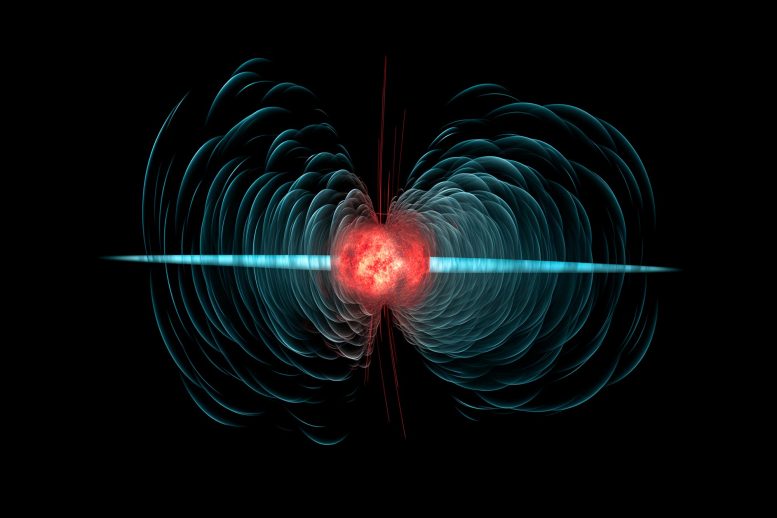
Scientists have made a significant breakthrough in understanding neutron star glitches through experiments with ultracold supersolids. This research, linking quantum mechanics and astrophysics, reveals new details about the internal dynamics of neutron stars and opens new avenues for simulating stellar phenomena.
Combining quantum mechanics and astrophysics sheds light on neutron star glitches.
Neutron stars have fascinated and puzzled scientists since the first detected signature in 1967. Known for their periodic flashes of light and rapid rotation, neutron stars are among the densest objects in the universe, with a mass comparable to that of the Sun but compressed into a sphere only about 20 kilometers in diameter. These stellar objects exhibit a peculiar behavior known as a “glitch,” where the star suddenly speeds up its spin. This phenomenon suggests that neutron stars might be partly superfluid. In a superfluid, rotation is characterized by numerous tiny vortices, each carrying a fraction of angular momentum. A glitch occurs when these vortices escape from the star’s inner crust to its solid outer crust, thereby increasing the star’s rotational speed.
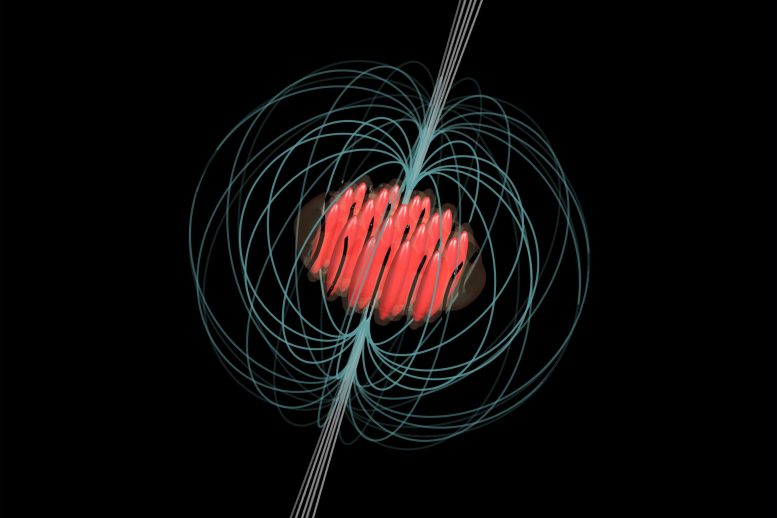
Ultracold quantum gases made of dipolar atoms form an ideal platform for simulating mechanisms inside neutron stars. Credit: Elena Poli
Supersolids and Neutron Star Research
The key ingredient for this study lies in the concept of a “supersolid” – a state that exhibits both crystalline and superfluid properties – which is predicted to be a necessary ingredient of neutron star glitches. Quantized vortices nest within the supersolid until they collectively escape and are consequently absorbed by the outer crust of the star, accelerating its rotation. Recently, the supersolid phase has been realized in experiments with ultracold dipolar atoms, providing a unique opportunity to simulate the conditions within a neutron star.
Breakthrough Study in Quantum Mechanics and Astrophysics
The recent study by researchers at the University of Innsbruck and the Austrian Academy of Sciences as well as the Laboratori Nazionali del Gran Sasso and the Gran Sasso Science Institute in Italy demonstrates that glitches can occur in ultracold supersolids, serving as versatile analogues for the inside of neutron stars. This groundbreaking approach allows for a detailed exploration of the glitch mechanism, including its dependence on the quality of the supersolid. “Our research establishes a strong link between quantum mechanics and astrophysics and provides a new perspective on the inner nature of neutron stars,” says first author Elena Poli. Glitches provide valuable insights into the internal structure and dynamics of neutron stars. By studying these events, scientists can learn more about the properties of matter under extreme conditions.
“This research shows a new approach to gain insights into the behavior of neutron stars and opens new avenues for the quantum simulation of stellar objects from low-energy Earth laboratories,” emphasizes Francesca Ferlaino.
Reference: “Glitches in Rotating Supersolids” by Elena Poli, Thomas Bland, Samuel J. M. White, Manfred J. Mark, Francesca Ferlaino, Silvia Trabucco and Massimo Mannarelli, 29 November 2023, Physical Review Letters.
DOI: 10.1103/PhysRevLett.131.223401
The study has been published in Physical Review Letters and was financially supported by the Austrian Science Fund FWF and the European Research Council ERC, among others.

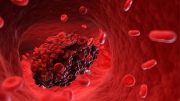
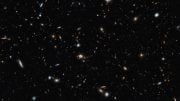
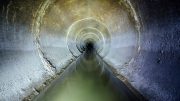
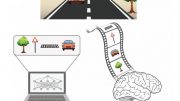
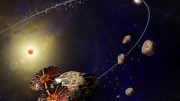
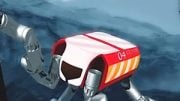


Besides being a beautiful model, it seems promising. Large glitches occurs proportionally to the spin down rate. [A&A 608, A131 (2017),
“The glitch activity of neutron stars” J. R. Fuentes, C. M. Espinoza, A. Reisenegger, B. Shaw, B. W. Stappers and A. G. Lyne.] And unless I’m mistaken, their model display that same behavior (their eq. 1).